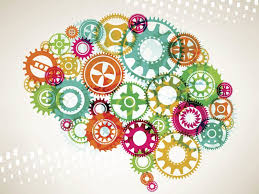I wrote about how our organizations are sets of interrelated/interdependent subsystems, aggregated to the enterprise system. In that, I shared a perspective about human nature. How, while being well intended, we tend to focus on our jobs/functions, often doing things that inadvertently adversely impacting other parts of the organization. We, also, tend to focus so deeply on optimizing what we do, that we may not understand distant parts of the organization and how our work impacts them. As a refresher, that post is “The foot bone connected to the leg bone…..”
Our customers face the same challenges! Like all of us, they tend to be tunnel blind, focusing on their jobs/roles and achieving their goals. They may not understand how what they do fits into the strategies and priorities of their organizations. They may not understand how their business really works.
This represents a huge opportunity for sellers to help their customers. Great sellers, help their customers connect the dots between the different parts of the organization. They help their customers understand how what they are doing contributes to the overall corporate strategies, goals, purpose. Great sellers help their customers connect the dots of what they do, to the rest of the organization. In doing this, they can help the customer make better decisions.
Helping the customer connect the dots within their function and the rest of the organization can help them make sure the right people are involved, that they are considering the right issues/asking the right questions. It helps them understand the interdependencies within the organization–those they are dependent on, those that depend on them. Understanding these is critical to their and the organization’s success.
Leveraging the entire organization, helping them the customers work with others in the organization, builds a stronger case for support, for urgency in getting things done, and in maximizing success. As we help them map the path forward, we can help facilitate their decision process. We help them make sense of the impact on the enterprise, to gain greater confidence in the need to change across the organization, to align interests reducing uncertainty, to gain consensus for taking action.
We and our customer tend to focus on our respective “subsystems.” We create huge value with our customers by helping them see the bigger picture. We create huge value in our organizations, by helping them understand the entirety of the customer’s business and how we can contribute to their success—isn’t that what account management is about?
Afterword: For those that want to follow the Business Acumen/Systems Thinking series, click on the link for the collection.

Leave a Reply